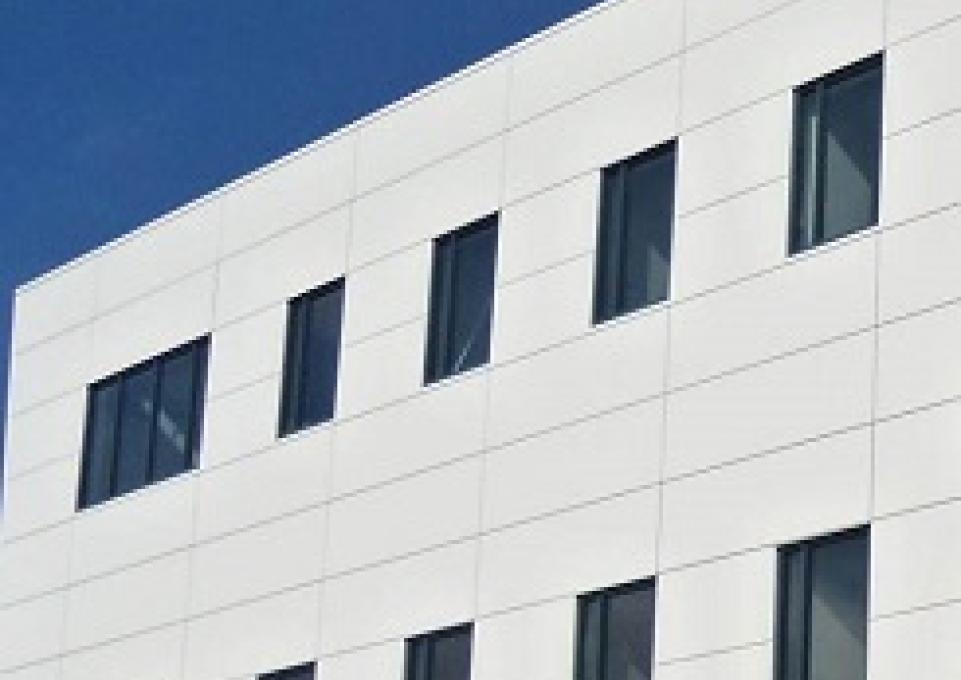
Buffalo State's fashion and textile technology (FTT) faculty are on the verge of something new for fall—not haute couture, but rather moving into a grander space where they will teach undergraduates how to design, make, and market cutting-edge clothes.
The FTT department has begun moving from Caudell Hall into its new digs on the third floor of the $36.5 million Technology Building. FTT will be followed by faculty from the Computer Information Systems Department onto the second floor and then Engineering Technology Department onto the first floor. Classes will begin in the new building this fall.
Designed by the S/L/A/M Collaborative and constructed by LPCiminelli and Manning Squires Hennig Co. Inc. beginning in 2011, the building includes a vegetated green lower roof area, a photovoltaic solar collector on the upper roof, and is expected to receive Leadership in Energy and Environmental Design (LEED) certification.
The new FTT space includes three production laboratories, a research lab, a computer workroom, two classrooms, two lounges, and a designated space for historic clothing.
In July, new industrial-style sewing machines and a state-of-the-art fabric printer will arrive and faculty will begin training on them.
“The new equipment will offer students what they would experience in the industry,” said Lynn Boorady, chair and associate professor of the FTT program. Coincidentally, with the new space comes an official department designation this fall.
Currently, 380 students are enrolled in FTT, which has become increasingly popular. Seven full-time faculty members and several adjunct professors teach courses ranging from Fundamentals of Apparel Construction to Advanced Product Development. Last year, Buffalo State began a minor in fashion design.
“We would absolutely love to expand the department over time,” Boorady said. “Right now, we’re excited that we can introduce students to this new and improved space with improved equipment.”
Students will see immediate benefits: They will have all their fashion courses in one building, and they can access two workrooms after hours with a key card.
“Nothing is more heartbreaking than having to kick students out when they are working on a project that is due the next day,” Boorady said.
Students will share a thermal science textile analysis lab on the first floor with the other technology disciplines. Boorady predicts housing the three disciplines under the same roof will create a stronger symbiotic relationship between them. She also sees greater opportunity for students to connect with industry professionals. Already, New Era Cap Company has expressed interest in occasionally using the third-floor space to work on prototypes.
“Having representatives from companies like New Era come in will provide more contacts for our students and make them more competitive,” she said.
